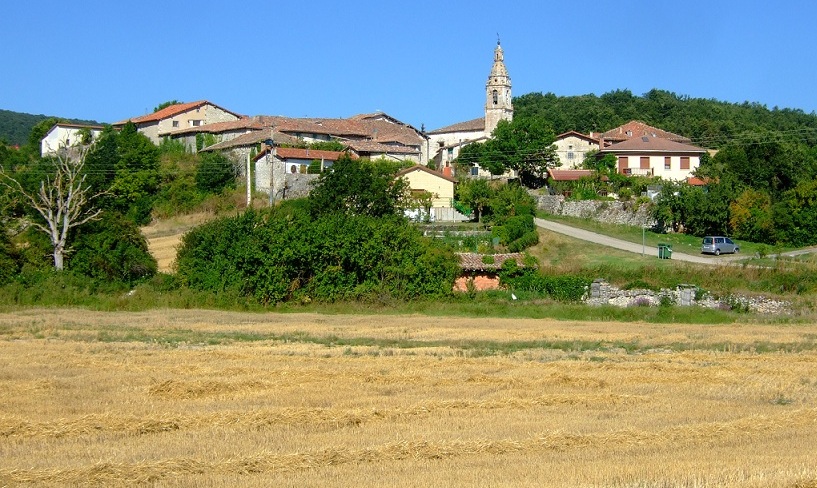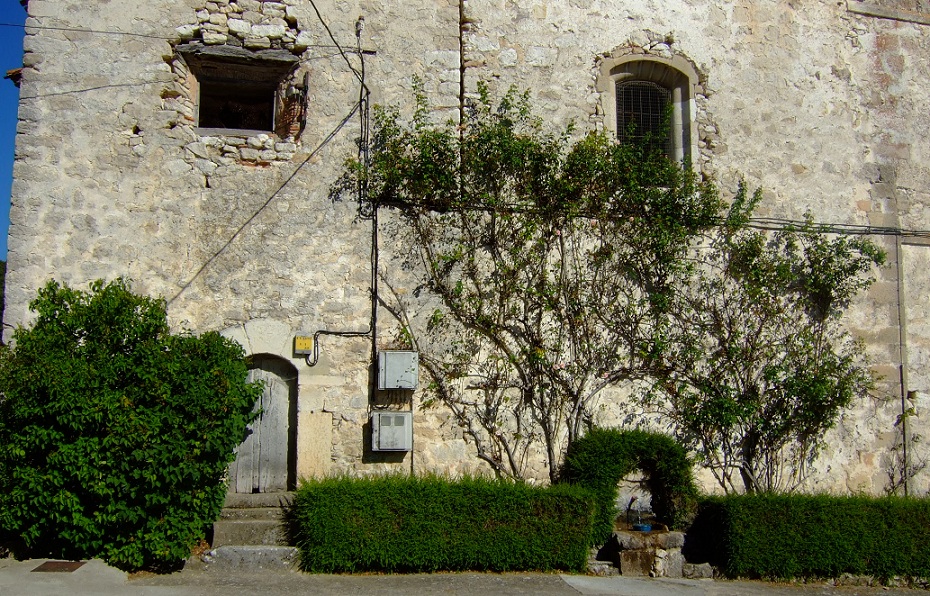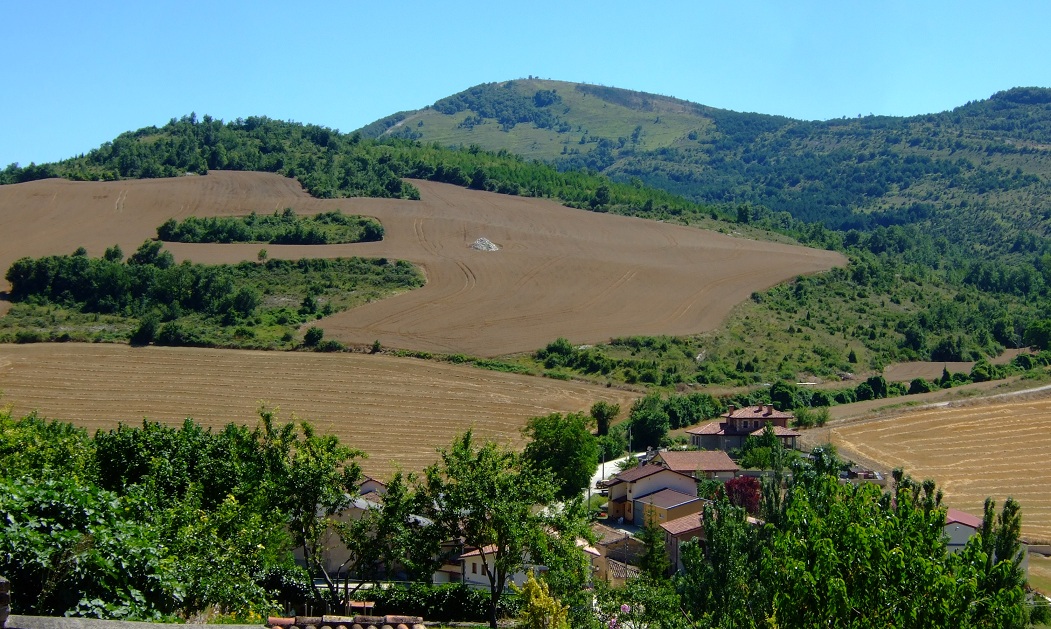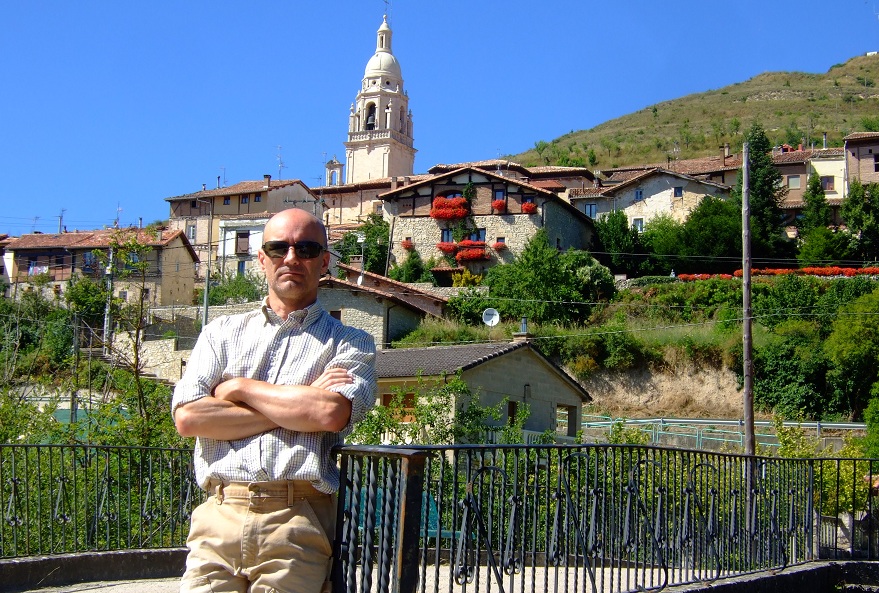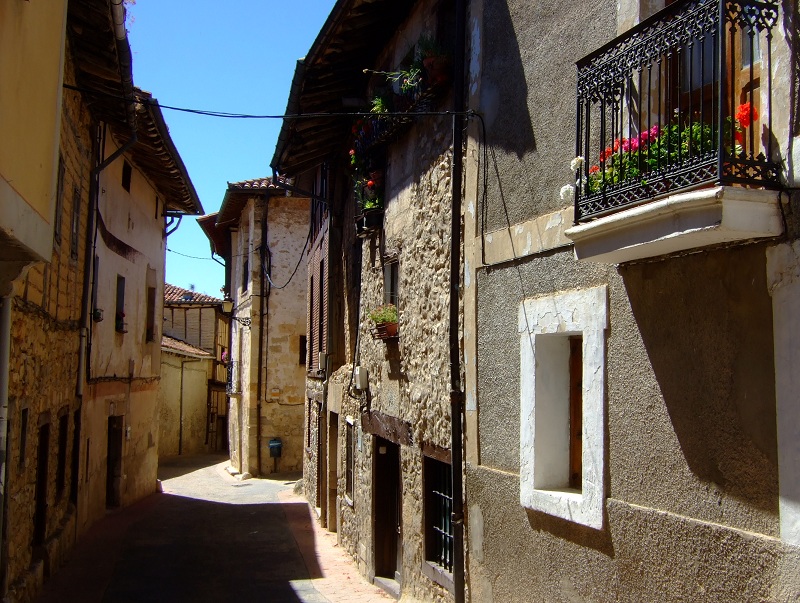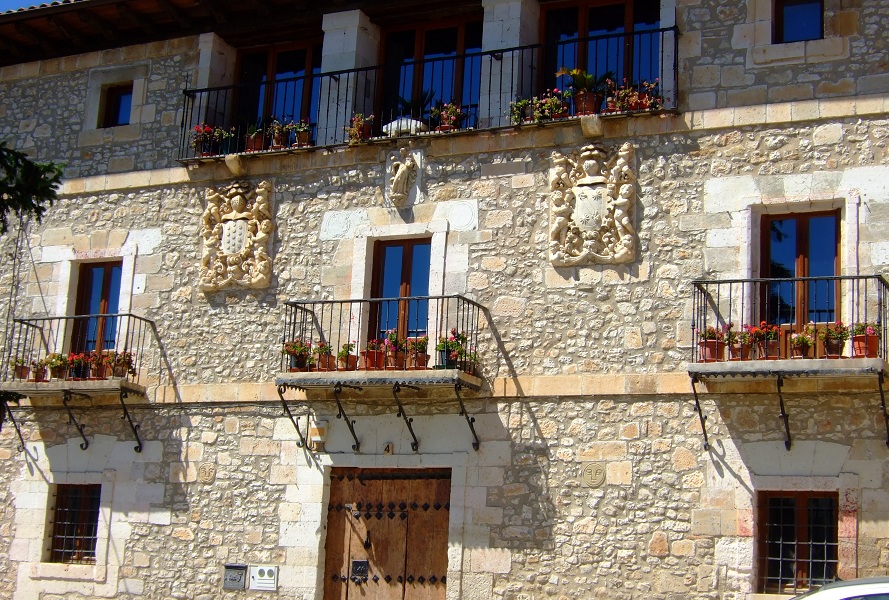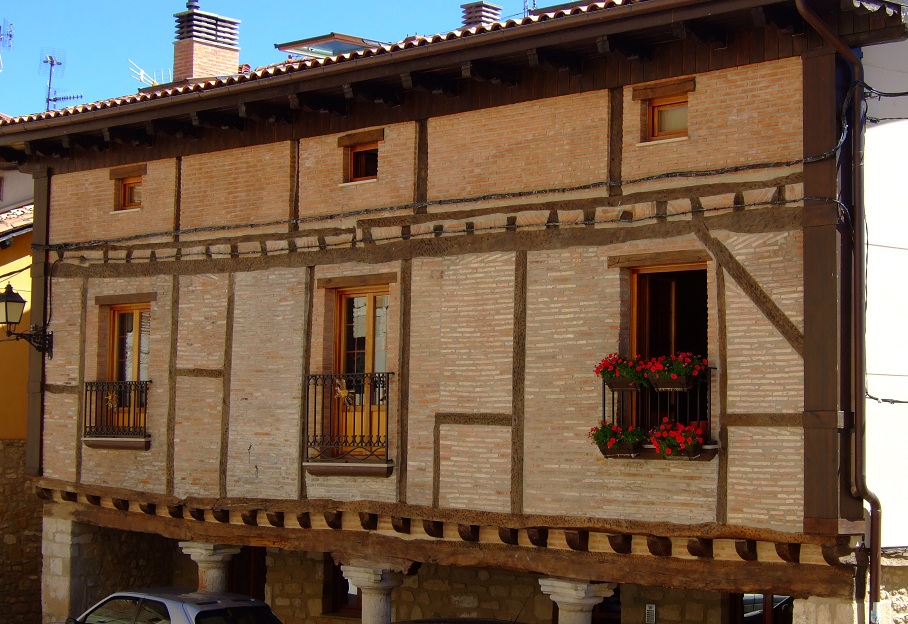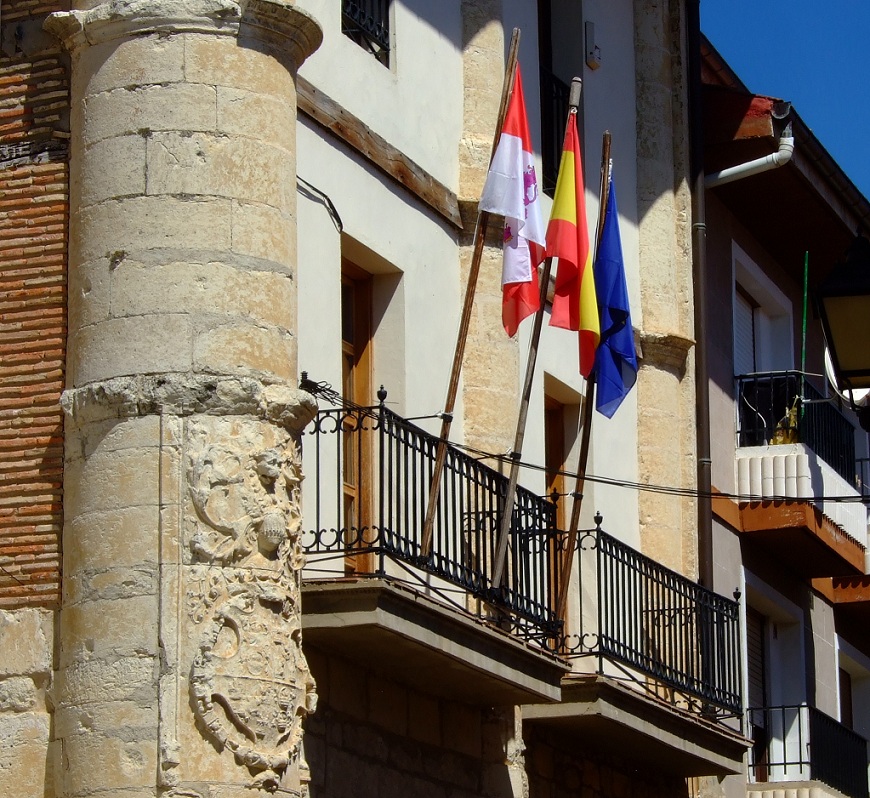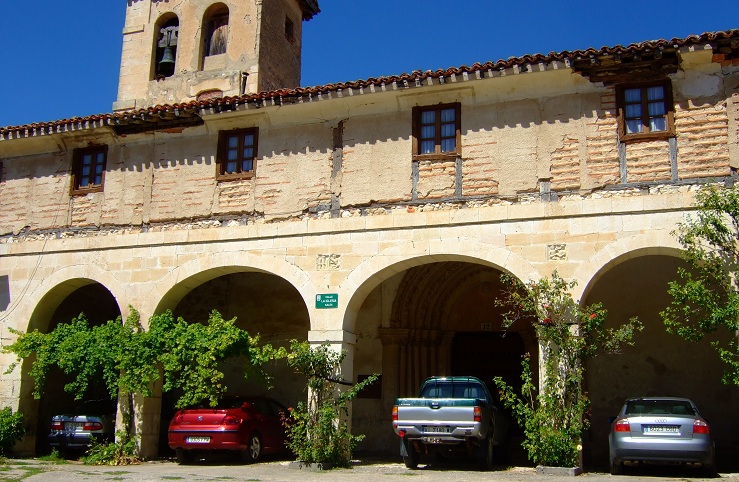Despite the many routes that I’ve already done around the Basque Country, I’m yet to see, in its southern part (called the Álava plain), something that does not resemble Castille; therefore I say: the fact that the Álava plain belongs to Euskadi and, worse yet, supports the Basque separatism, are things that remain beyond my understanding. Álava is historycally and culturally Castile.
But let’s start. Today I’ll take the bike for visiting the very polemic and disputed County of Treviño, which route belongs to the series The Basque Trail not for being part of Basque region, but precisely for being not: Treviño is a Castillian exclave within Álava, the anachronistic and symbolic last bastion that Burgos province is reluctant to lose. I invite the reader to make me company along this nice and interesting itinerary.
On a bright hot August morning I put on my helmet and gloves, climb on Rosaura and, out of the garage, I ride away from Vitoria towards the southwest along A-3102, a lovely and quiet road that some kilometres further, among thick beech woods, surmounts the province border through a mountain pass, from which one can already see a good expanse of this large county whose history has so knavishly been re-written by the Basque Government to fit their expansionism.
Once here, on a hill to the left I come across the idyllic and tiny Doroño village, barely one dozen houses napping under the summer sun around an old church. I branch off and climb to the village square, where, upon switching off Rosaura’s engine, I’m embraced by a silence only broken by the gurgling from a little drinking fountain whose thin stream fills a bucket someone has put there. Walking around the few houses I see two or three of them for sale, and I feel tempted to buy one and settle down here, in this forlorn and lovely corner of the world. And I’m not the first one in so feeling: at the foot of the hill there’s a recently built residential area, several times bigger than the old village itself.
The fraudulent Auñamendi encyclopedia (a Basque instrument for cultural misinformation) says that Doroño is “a place from Álava” (i.e. Basque), a glaring falsehood, being the irrefutable truth that it’s a place from Burgos (i.e. Castille), to which it has always belonged. But such is the Orwellian way how Basque separatists re-invent History and manipulate things.
Only a few kilometres south of Doroño, in the very heart of the county, there lies the Villa of Treviño on a hillside facing south, in harmony with the surrounding lands. Around the year 1,000 aD these lands paid duties to the Monastery of San Millán (by then Navarre). It is thought that Muslim raids reached this region, and that prior to the village there was an obscure cenobite settlement.
After the said monks, there was a Navarre castle –now gone– and along with this castle Treviño was founded by king Sancho VI in the year 1161 by granting it the fuero de población (settlement privilege). The village was given the same layout as nearly every other in this region, for instance Salvatierra, Peñacerrada, Antoñana and many others: three parallel streets along the slope, connected by passageways and alleys.
As I explore the place, I come inside a bar for a pincho and a txakoli wine, my ritual in every of these Basque Trail trips. Locals here have similar habits as in Álava province, rather than those in Burgos, where they belong; therefore they have the Basque tapas style and wines. Actually, Treviño County has tried several times to become a part of Álava, but Burgos never agreed to it.
Along the main street I see the architecture which is typical in this region, sober and elegant. Masonry or brick facades, often with colonnaded porches.
By the way, this architecture is more Castillian than Basque (same as the whole Álava plain). If –to be fair– we have to admit that geographically and culturally the County of Treviño should belong to Álava rather than Burgos, then for the same –plus historical– reasons we have also to admit that Álava should belong to Castille rather than the Basque Country.
But… which is the long litigation between Burgos and Álava for this county? The Basque put forward fallacious historical reasons. Fallacious for three reasons: first because Treviño was founded by the Navarres, not by the Basques; second because, even if we associate Basques with Navarres, in the year 1200 Treviño was swapped with some Castillian-conquered villages, i.e. soon after it was founded, and has remained Castillian since. Eight centuries versus four decades, which should have more weight?
The third reason has to do with the main argument on the part of the Basque: namely, they state that Treviño belonged to Álava in the XVth century, and based on this inaccuracy they claim to reincorporate the county; but which re-incorporation are they talking about, when the documented history goes that Treviño has never belonged or been a part of Álava? True, in 1417 the towns of Vitoria, Salvatierra and Treviño founded the Álava Brotherhood, which in centuries to come would turn into the Álava province we today know; but back then, the brotherhood’s only purpose was to jointly fight against banditry and pillage; besides –and more important– Treviño quitted a few decades after its creation.
Such were the real facts, alleged by even the Basque-biased Auñamendi encyclopedia. So, no “reincorporation” at all: what separatists actually want is to incorporate Treviño County; sheer expansionism.
But let’s carry on the bike tour. After visiting the county’s capital, I take the main road to the east, up the valley, and I soon arrive to another village of a funny name: Franco.
Not that it’s being named after the (in)famous Spanish general, but it turns out to be quite ironic that, within the boundaries of Álava province, barely a stone’s throw away from the Basque Country’s capital, there lies a place of such an unpleasant name for the Basques. My guess is, first thing they’d do after annexing Treviño County, their government would change this village’s name.
Franco is a fine and very tiny place, barely a hamlet, with three short streets and not a sigle bar for a chance driver to soothe his thirst; no need of a bar for the neighgours, though, as they probably live here in a family-like fashion; the same family ways in which the churche’s portico is taken over and shared out as a parking lot, lest the cars undergo a sunstroke, the poor machines.
Franco lies by the road crossing right in the middle of the region, whence any route is good for an early evening ride. In some other trips of this Basque Trail series we’ve been to Bernedo and to Peñacerrada, and in the next chapter we’ll visit Samaniego; but for today I’ve made my goal: to know Treviño and to make justice to its true history. Now you can keep riding if you please. As to me, I’ll complete the loop coming back along the road to Vitoria.
Only an interesting fact remains to be explained, which reveals to what point the world is ruled by money, historical reasons being but excuses: two centuries after having quitted the Brotherhood of Álava, when Treviño County’s inhabitants requested (in 1646) to join the province which thence issued forth, the Lords of Álava objected that, being their townships priviledged and free from paying duties to Castille, whereas Treviño was subjected, they couldn’t accept the county’s membership lest the king took precedent and try to extend the taxes to the whole province; thus, as a condition prior to accepting the applicants plea, they told Treviño to first obtain from Castille an exemption to its taxes; but as the Crown didn’t grant them such grace, the County of Treviño was refused by the Lords of Álava.

